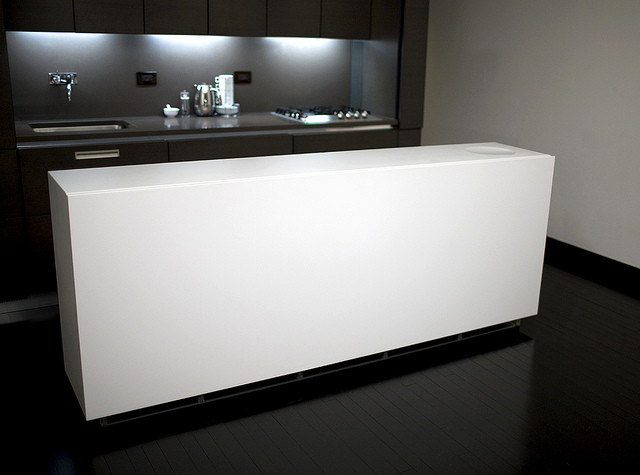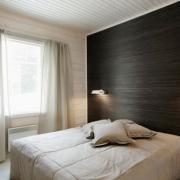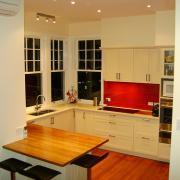Choosing the right Kitchen Island
Kitchen islands have become one of the most requested features for home buyers when on the lookout for new homes. Kitchen island not only provide a very modern looking design aesthetic but also helps save space by incorporating an open plan living and dining space. Even though these are a recent development, this allow two to three people to cook together, makes the stove accessible from all the sides of the space and make its counter top a good surface for serving meals. However, one must choose wisely, as not only does it add a new aesthetic effect to the kitchen, but also has many functional benefits.

Here are a few ideas that might help:
- Firstly, decide Where to put it. The obvious place is at a central point in your kitchen. Before you plan a kitchen island, make sure (whether in a showroom or a builder) whether you actually have enough room for the island at your expense. Equally, shoehorning in a wide island that steals unnecessary room beyond it will make the kitchen appear smaller.
- Secondly, what to put in it. Go with your own ideas. If you are a keen cook an island that houses the hob will allow you to face the dining room where your crowd will be gathered. However, it will also require it to be deep enough to allow some worktop space at the back of the hob for safety reasons, if not practical ones.
- What goes beneath really depends on your kitchen space. Extra drawers are a plus if you otherwise lack storage in your kitchen. However, if you already have enough space, indulge in luxuries.
- If you do not want or have a built-in kitchen island, there are a variety of options to choose from freestanding ones. The market is flooded with these and also adds the same aesthetic appeal as their more solid counterparts.
- You may also incorporating seating into your island, using bar stools, and/or chairs of your choice. But you must work around the size of your kitchen for this. If you have a long and narrow kitchen, make seating arrangements at the end of the island. This feature does not have to be made permanent to your prior arrangements for an island.
- Lighting comes in next. It is important that the lighting blends in. You want the light to come straight down on the island. The most common choice is recessed lightings. Another option is pendant lights, which hang from the ceiling. However, be careful with these. It’s easy to end up with them at wrong heights. Also make sure you opt for lightings which can be relatively dimmed when you are no longer in need of maximum illumination for working. Make sure everything blends in with the surroundings, though.
- Islands should mimic the rest of the kitchen, typically by using the same finish and from the same manufacturer, and don’t call attention to themselves.
- A well-designed island is a great place to congregate while at the same time separating those involved in cooking and cleaning from those who are just hanging out. After all, “Like it or not, everybody ends up in the kitchen”.










